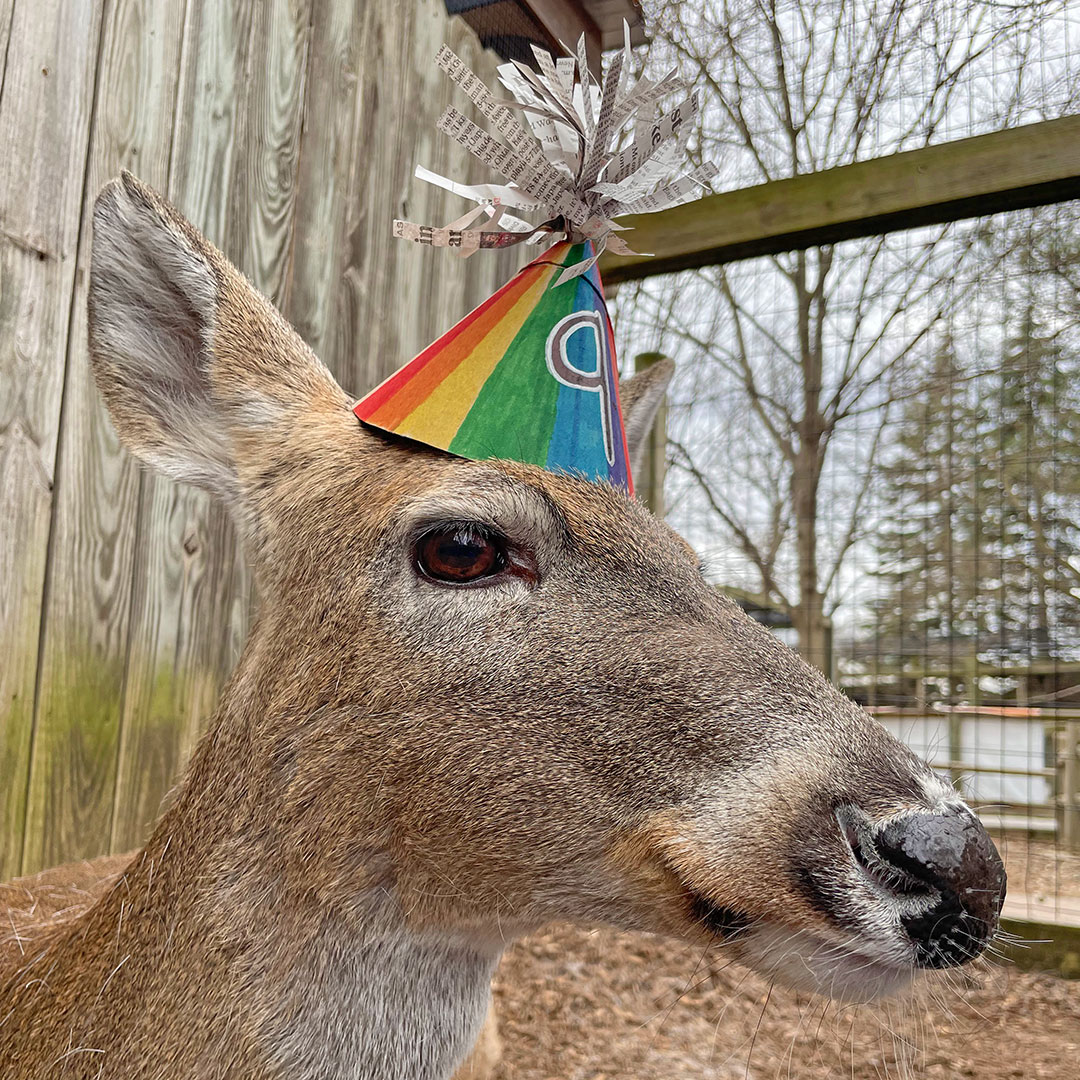- Understanding the significance of the countdown to opening day and its impact on wildlife habitats.
- Exploring the white-tailed deer’s behavior, ecology, and adaptations, with a focus on Melinda in her habitat.
- The role of zoos in education and conservation, exemplified by engaging public interest through events.
- The importance of camouflage in survival strategies for white-tailed deer, especially fawns.
- Insights into zoo management and preparation for public visits, highlighting conservation efforts.
Nine days are left until the grand opening of the season at the zoo, and anticipation runs high not just among visitors but also with the animals like Melinda, the white-tailed deer. Zoos orchestrate such countdowns as both celebratory and educational endeavors, using these moments to forge connections between the animals and their human visitors. For Melinda, it is an opportunity to showcase her species, the white-tailed deer, which holds an iconic status in North American wildlife.
The white-tailed deer, also known by its scientific name Odocoileus virginianus, is a versatile and adaptive species. Adaptations unique to their kind have allowed these deer to thrive in diverse habitats, from dense woods to suburban landscapes. A particularly interesting adaptation is the white spots on fawns, which act as a natural form of camouflage. This adaptation cleverly disguises them against the sunlight-patched forest floor, providing crucial protection from predators. Understanding these adaptations deepens appreciation for how these creatures fit into their ecosystems.
Melinda, with her presence at the zoo, stands as an educational ambassador for her kind. The white-tailed deer’s behaviors, such as foraging habits and social structures, offer a window into the broader ecological dynamics at play in their natural habitats. White-tailed deer are primarily browsers, consuming a mixed diet of leaves, fruits, and twigs. This browsing habit impacts plant communities, influencing biodiversity. By observing Melinda’s interactions within her habitat, visitors gain direct insight into the ecological roles these deer perform in the wild.
Zoos play significant roles beyond mere exhibition. They serve as critical institutions for wildlife conservation and public education, striving to balance animal welfare with informative displays. The countdown to opening day and related activities exemplify how zoos aim to engage the public. By highlighting the subtle yet fascinating details of species like the white-tailed deer, such institutions foster a deeper appreciation for wildlife conservation efforts. It’s a chance to educate visitors on the importance of preserving natural habitats and the animals that inhabit them.
Camouflage is an essential survival strategy for many wildlife species, white-tailed deer among them. The spots on fawn deer resemble sunlight filtering through leaves, allowing them to blend almost seamlessly into dappled shadows. This protective measure significantly decreases their visibility to predators like coyotes, bobcats, and even birds of prey. Observing these survival tactics can enrich visitors’ understanding of the natural world and awe at the intricacies of evolutionary strategy.
With opening day imminent, zoo management is engaged in rigorous preparation to ensure a seamless experience for both creatures and guests. This involves meticulous planning around habitat maintenance, staff training, and visitor education. Safety protocols are paramount, ensuring both animal and human welfare is maintained. Furthermore, these preparations highlight the conservation efforts many modern zoos prioritize. Educational programming is designed to extend awareness about wildlife conservation issues, underscoring human responsibilities towards environmental stewardship.
The setup of countdown activities, like Melinda’s anticipated interactions, underscores the importance of connecting people with nature. Such interactions encourage a shared commitment to conservation goals among visitors. Through the lens of Melinda’s world, the broader narrative of white-tailed deer and their role in our ecosystems becomes palpable. Engaged visitors leave with more than just memories; they carry forward a message of conservation and respect for wildlife. The expertise and care taken in zoo experiences reflect not just entertainment but a deeper educational purpose.
In anticipation of a lively opening day, these final preparatory days emphasize the valuable interaction between education, conservation, and public engagement. Melinda, a captivating presence in her habitat, stands ready to charm and educate her audience. Her countdown party is more than a celebration; it symbolizes the vital bridge zoos create between the wild inhabitants of our planet and the people who share their world. Through thoughtful presentations and well-curated exhibits, visitors to the zoo this season will discover much about the fascinating life of white-tailed deer and reflect on the intricate beauty of wildlife conservation.
*****
Source Description
🎉 𝟗 𝐦𝐨𝐫𝐞 𝐝𝐚𝐲𝐬 until opening day!!! Our White-Tailed Deer Melinda is having herself a little countdown party in her habitat! She can’t wait for you all to come visit her! 🥳🦌
FUN FACT: The white spots you see on fawns are a natural camouflage to protect them from predators! The white-spots help them blend into sun-speckled ground.
📸: Keeper Ky


